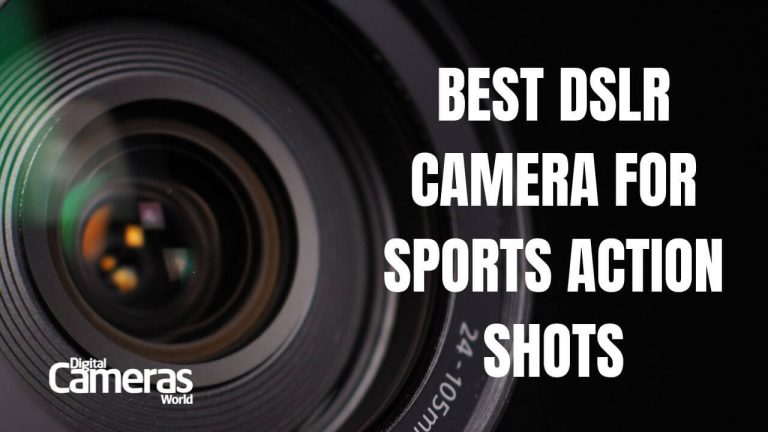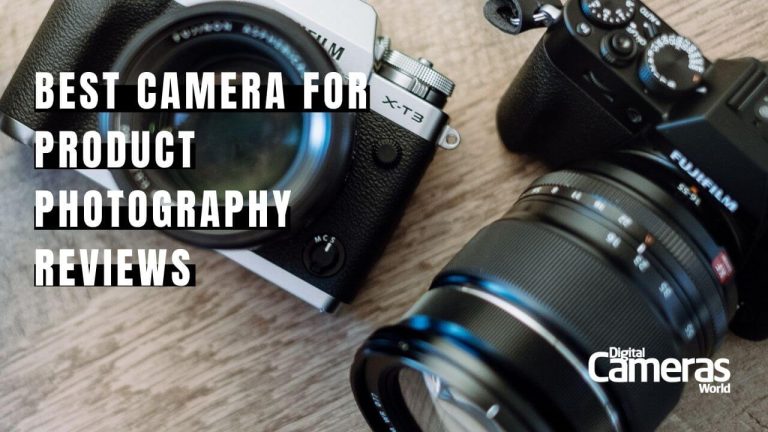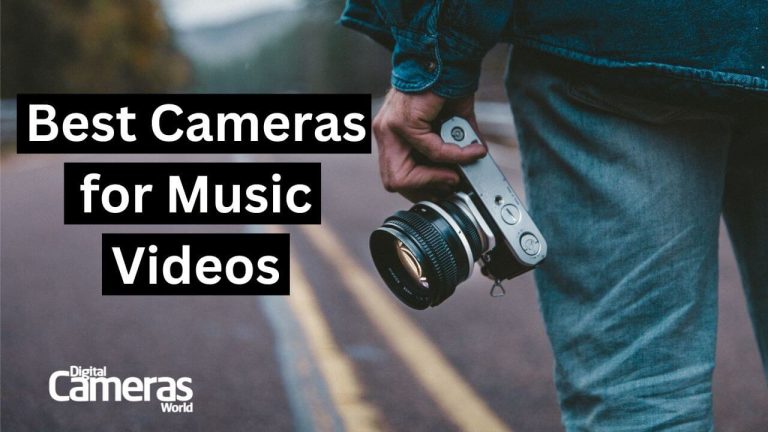10 Best Cameras for Black and White Photography (Monochrome) 2024 Guide
There’s an undeniable allure to black and white photography, a timeless quality that resonates deeply. While color photography has its place, venturing into the realm of black and white offers a distinct experience, one that evokes nostalgia and simplicity. Capturing compelling black-and-white images requires a nuanced understanding of light, but with the right camera, anyone can embark on this artistic journey.
For those enamoured with black and white photography, the unique process of thinking in monochrome offers a captivating mental engagement unlike any other. While some cameras are specifically designed for black-and-white photography, others offer both color and monochrome shooting modes, each adding a layer of charm to the images produced.
In today’s digital age, there are multiple avenues to capture monochrome photographs. Many digital cameras feature monochrome modes, and software tools like Photoshop and Lightroom enable users to convert colour photos into black-and-white masterpieces. However, for the highest-quality monochrome images, a camera that entirely foregoes capturing color information is essential—a rarity in today’s market.
What sets apart a dedicated monochrome camera? Traditional digital cameras utilize color filters over their sensors, which, while effective for capturing full-colour images, can limit the sensor’s ability to capture available light fully. In contrast, a true monochrome camera bypasses this limitation, resulting in unparalleled black-and-white image quality. While shooting in monochrome mode with a standard digital camera is possible, it may not achieve the same level of depth and richness as a dedicated monochrome camera.
Monochrome photography requires a different approach compared to traditional colour photography, with light, shadows, shapes, and textures playing more prominent roles, for photographers passionate about monochrome imagery and seeking the highest quality, investing in a dedicated monochrome camera is worth considering—though options are limited and often come with a hefty price tag.
Seeing in Black and White: The Best Cameras for Stunning Monochrome Shots
For many, viewing a monochromatic photograph invokes a sense of deep-seated nostalgia, transporting us to a simpler time. The evolution of photography, from the earliest color processes to the advent of digital imaging, has seen a gradual embrace of color reproduction. However, the timeless appeal of black-and-white imagery endures, capturing moments with a purity and elegance that transcends time.
With this appreciation for the artistry of black and white photography in mind, let’s explore some of the top camera options tailored for capturing stunning monochrome shots. Without further delay, let’s delve into the world of monochrome photography and discover the best cameras suited for this captivating form of expression.
1. Ricoh GR III Digital Compact Camera
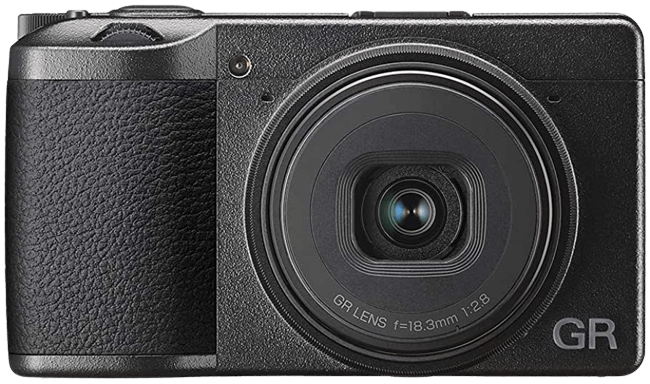
- Large APS-C sensor: Delivers high image quality and low noise even in low light.
- Compact and lightweight: Pocketable design for easy carrying.
- Sharp lens: f/2.8 wide aperture for excellent low-light performance and creative background blur.
- Built-in image stabilization: Reduces camera shake for sharper photos.
- Fast autofocus: Captures fleeting moments with precision.
The Ricoh GR III Digital Compact Camera boasts a durable magnesium alloy body that is both lightweight and compact, making it incredibly portable. Its ergonomic design includes a comfortable handgrip covered in textured rubber and thumb rests on the back for ease of use.
Despite its compact size, the Ricoh GR III packs a punch with its large APS-C sensor, delivering high image quality and low noise, even in low-light conditions. The fast f/2.8 aperture lens ensures excellent low-light performance and allows for creative background blur. Additionally, built-in image stabilization minimizes camera shake, resulting in sharper photos.
One of the Ricoh GR III’s standout features is its advanced autofocus system, which is faster and more responsive than its predecessors. With its hybrid autofocus system, capturing fleeting moments with precision is effortless, even in challenging lighting conditions.
Overall, the Ricoh GR III is a top contender in the realm of black-and-white photography cameras. It offers impressive image quality, a compact design, and intuitive controls, making it an ideal choice for photographers seeking simplicity without sacrificing performance.
Pros
- Outstanding build quality.
- Stealthy appearance.
- Small size is almost pocketable.
- Leaf shutter makes shooting flash on the street a breeze.
- Fast power up.
- Snap focus mode for zone shooting.
- Signature image quality.
- Newly designed 28mm equivalent lens
Cons
- The LCD is good but could always be brighter.
- Mode dial is a bit fiddly.
- Accessory ring cover is ridiculously loose.
- No charger in the box.
- Crap battery life
2. Sony a7 III ILCE7M3B Full-Frame Mirrorless Interchangeable-Lens Camera
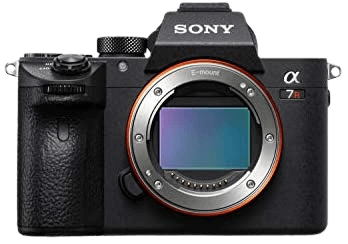
- Full-frame 24.2MP sensor: Excellent image quality and low-light performance.
- Fast autofocus: Accurate and fast tracking with 693 phase-detection points.
- 10 fps continuous shooting: Capture fast-action moments with ease.
- 4K video recording: Create high-resolution videos with excellent detail.
- Image stabilization: Reduces camera shake for sharper photos and videos.
- Weather-sealed design: Protects the camera from dust and moisture.
The Sony Alpha a7 III Full-Frame Mirrorless Camera with 28-70mm Lens and Accessories Kit enhances versatility with a camera bag, memory card, battery charger, and a 55mm UV filter. Alongside improvements to the imaging system, the a7 III features a 3.0″ tilting touchscreen LCD and a 2.36m-dot Tru-Finder OLED EVF for clear monitoring.
Equipped with a full-frame 24.2MP sensor, the a7 III delivers excellent image quality and low-light performance. Its fast autofocus system with 693 phase-detection points ensures accurate tracking, while 10 fps continuous shooting allows for easy capture of fast-action moments. Additionally, 4K video recording captures high-resolution videos with exceptional detail.
To reduce camera shake, the a7 III features image stabilization, while its weather-sealed design protects against dust and moisture. With its compact body and impressive features, the a7 III is a standout choice for photographers seeking high performance and versatility in black-and-white photography.
Pros
- Fantastic AF system
- 10fps burst shooting
- 4K video
- Compact body
Cons
- Limited touchscreen functionalit
- Overall system still large
3. Canon Full Frame Mirrorless Camera [EOS R]
![Canon Full Frame Mirrorless Camera [EOS R] Vlogging Camera (Body) with 30.3 MP Full-Frame CMOS Sensor](https://digitalcamerasworld.com/wp-content/uploads/2023/04/Canon-Full-Frame-Mirrorless-Camera-EOS-R-Vlogging-Camera-Body-with-30.3-MP-Full-Frame-CMOS-Sensor.png)
- 30.3MP full-frame CMOS sensor: Delivers high-resolution images and excellent low-light performance.
- Dual Pixel CMOS AF: Fast and accurate autofocus with good subject tracking.
- 8 fps continuous shooting: Capture fast-action moments at a decent speed.
- 4K video recording: Create high-resolution videos.
In 2018, Canon introduced the EOS R, a full-frame mirrorless camera featuring a 30.3MP CMOS sensor for high-resolution images and impressive low-light performance. Equipped with Dual Pixel CMOS AF, the EOS R ensures fast and accurate autofocus with good subject tracking capabilities.
With eight fps continuous shooting, photographers can capture fast-action moments at a decent speed. The camera also offers 4K video recording and 10-bit video output, enabling professional color grading for filmmakers—an important feature for a mirrorless camera.
The EOS R features an electronic viewfinder (EVF) for high-resolution composition and a vari-angle touchscreen LCD for comfortable shooting from various angles. While the EOS R shines within the Canon ecosystem, its performance is limited compared to that of its competitors in the mirrorless market. Despite its impressive features and compatibility with existing EF lenses, its cropped 4K video and lack of in-body image stabilization put it behind rival models from Sony, Nikon, and Panasonic. However, with the impending release of the Canon EOS R5 and EOS R6, Canon continues to expand its mirrorless lineup to cater to a wider range of photographers.
Pros
- Great control customization
- 5,655(!) focus positions
- Fully articulating screen
Cons
- No in-body stabilization
- Cropped 4K video
- Single SD card slot
4. Canon EOS 5D Mark IV Full Frame Digital SLR Camera
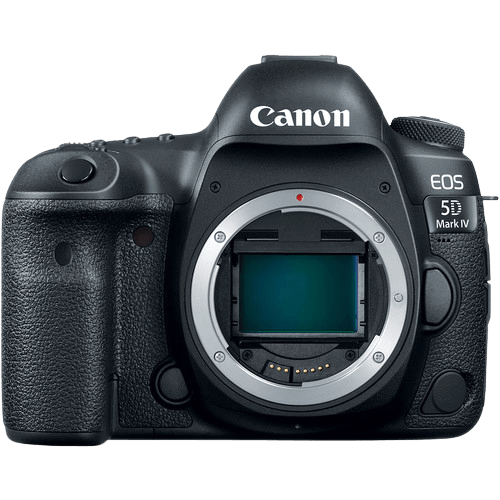
- 30.4MP full-frame CMOS sensor: High resolution for detailed images.
- Dual Pixel CMOS AF: Fast and accurate autofocus for both photos and videos.
- 7 fps continuous shooting: Decent speed for capturing action.
- 4K video recording at 30 fps: Create high-quality videos.
- Dual Pixel RAW: Allows for micro-adjustments to focus and bokeh after shooting.
- Built-in Wi-Fi and NFC: Easy sharing and transfer of photos.
The Canon EOS 5D Mark IV Full Frame Digital SLR Camera builds upon the esteemed legacy of its predecessors, offering enhancements in image quality, performance, and versatility. With a new 30.4MP full-frame sensor, the 5D Mark IV delivers stunning image quality, while 4K video recording capability provides high-quality videos.
The camera features Dual-Pixel CMOS AF for fast and accurate autofocus in both photo and video modes. With a refined 61-point AF system, capturing sharp and precise shots is effortless. Additionally, the Dual-Pixel RAW functionality allows for micro-adjustments to focus and bokeh after shooting.
The EOS 5D Mark IV also boasts a continuous shooting speed of 7 fps, which is ideal for capturing fast-action moments. Built-in Wi-Fi and NFC make it easy to share and transfer photos wirelessly, while the intuitive touch panel LCD enhances usability.
While the camera offers exceptional image quality and performance, it comes at a premium price compared to its competitors. Additionally, the 4K video recording options are limited, and the ISO range remains unchanged. Overall, the EOS 5D Mark IV is a powerful tool for photographers and videographers seeking superior image quality and versatility.
Pros
- Responsive touchscreen
- Advanced AF system
- Live View AF performance
- Excellent sensor performance
- 7fps burst shooting
- Connectivity options
Cons
- Expensive compared to rivals
- ISO range hasn’t increased
- 4K video options limited
5. Nikon Z7 FX-Format Mirrorless Camera
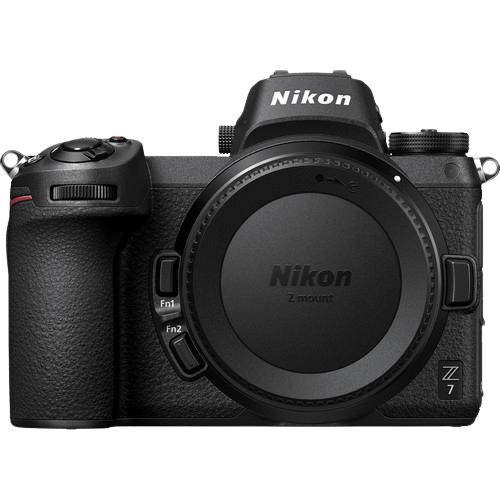
- 45.7MP high-res sensor for superb image quality.
- In-body image stabilization (IBIS) for sharper photos/videos.
- Fast autofocus with 493 points for accurate tracking.
The Nikon Z7 FX-Format Mirrorless Camera stands out as one of the most advanced options on the market. It delivers superb image quality ideal for black-and-white photography enthusiasts. Despite its premium price tag, this camera excels in performance, offering a perfect sensor, exceptional autofocus capabilities, impressive dynamic range, and efficient noise reduction at high ISO settings.
While the Z7 may not win any beauty contests, its functionality is top-notch. Its magnesium alloy body boasts excellent durability and weatherproofing, ensuring longevity. The camera’s ergonomic design includes a comfortable handgrip for secure handling.
The layout of controls may seem unconventional at first, but with patience, users will appreciate the creative freedom they provide. The thin LCD screen is highly functional for camera control and live view mode.
Featuring a high-resolution 45.7MP BSI CMOS sensor, the Z7 delivers exceptional detail retention, aided by its back-illuminated design and lack of an anti-aliasing filter. In-body image stabilization enhances image sharpness, while the Expeed 6 image processing engine ensures smooth operation.
Autofocus performance is exemplary, thanks to the Hybrid AF system with 493 phase-detection points, which remains active during video recording. Utilizing contrast-detect technology, the system excels in low-light conditions, making it an ideal choice for black-and-white photography enthusiasts seeking top-tier performance.
Pros
- Superb still image quality
- Very good high ISO performance
- Excellent dynamic range
- Sharp, very high-resolution stills
- Vibrant default colors
- Autofocus points cover nearly all of the image area
- Good AF-S speeds
- 4K focus peaking
- Separate settings menus for stills and video
- Rugged build quality
- Excellent weather resistance
- Familiar control layout for existing Nikon user
- Well-organized menus
Cons
- Single card slot
- While touchscreen is responsive, touchscreen is underutilized (no AF touchpad function)
- Rear display does not offer swivel functionality
- Limited buffer depths
- 1/200s x-sync speed
- Continuous autofocus in video is improved over prior Nikon cameras, but still underwhelming
- Low-light autofocus during video recording is not good
6. Leica M Monochrome (Typ 246) Digital Rangefinder Camera
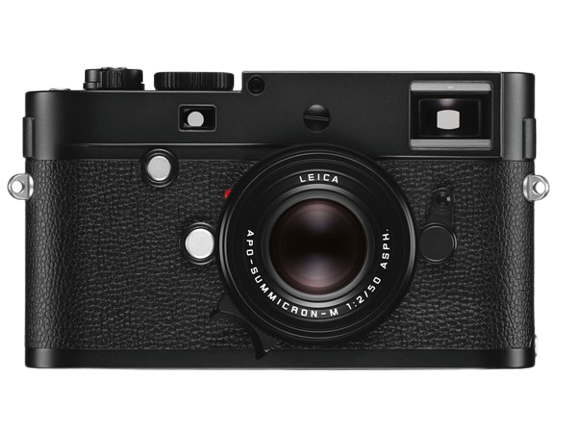
- Full-frame monochrome sensor: Delivers exceptional black-and-white image quality with sharper detail due to the lack of a color filter.
- Manual focus rangefinder: Classic design for a more deliberate shooting experience and precise control over focus.
The Leica M Monochrome Digital Rangefinder Camera continues Leica’s legacy of excellence in the photography industry. As one of the few digital monochrome cameras available, it combines classic design with modern technology to satisfy the needs of both traditionalists and mirrorless camera users.
Equipped with a full-frame monochrome sensor, the M Monochrome delivers exceptional black-and-white image quality with sharper detail, thanks to the absence of a colour filter. Its manual focus rangefinder offers a deliberate shooting experience and precise focus control reminiscent of classic photography techniques.
Powered by a high-performance processor with over 2GB of buffer memory, the M Monochrome enables rapid consecutive shooting at multiple times the speed of its predecessor. The 24-megapixel sensor captures 35mm full-frame images with industry-leading depth, clarity, and resolution, exclusively in luminance values for unparalleled sharpness.
With an expandable ISO of 25,000, the M Monochrome ensures superior image quality even in low-light conditions, surpassing traditional DSLRs. The Leica M Monochrome stands as a testament to Leica’s commitment to innovation and excellence, offering photographers the freedom to capture stunning black-and-white images with unparalleled clarity and depth
Pros
- True black and white image sensor.
- Live View with focus peaking.
- ISO 25000 support.
- Sharp rear LCD with sapphire glass cover.
- Bright optical viewfinder with rangefinder patch.
- Brass and magnesium construction.
- Dust and moisture resistant.
- Includes Adobe Lightroom license.
Cons
- Expensive.
- Video features could be better.
- A little slow to start.
- High base ISO can be an issue in bright light.
7. Nikon FM 2 Black Camera
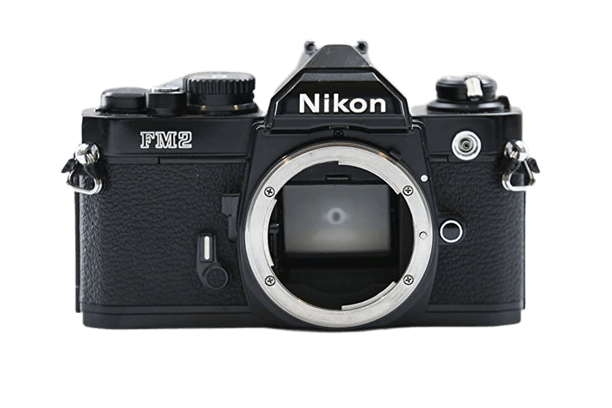
- 35mm film camera: Uses classic film for a unique aesthetic.
- Manual focus: Requires you to control the lens for sharp photos.
- Metered shooting: Light meter helps you achieve proper exposure.
- Mechanical shutter: Functions without batteries (batteries only power the light meter).
The Nikon FM2 Black Camera embodies the essence of classic film photography, offering photographers a simple yet robust tool for capturing timeless images. Built with durability in mind, this compact and rugged camera is favoured by both amateurs and professionals alike.
Despite its small size, the FM2 is a reliable workhorse, often used as a backup camera by professionals or as the primary choice in certain situations. Its reputation is bolstered by its association with iconic photographs, such as the Afghan Girl portrait captured with the Nikon 105mm f/2.5 lens.
What sets the FM2 apart is its simplicity and reliability. With manual focus and metered shooting, photographers have full control over their images without the complexity of automated functions. The built-in light meter, powered by batteries, ensures proper exposure without compromising the camera’s mechanical integrity.
As a fully mechanical 35mm SLR camera, the FM2 operates without batteries unless metering is required. Its Nikon F lens mount offers compatibility with a wide range of lenses, providing photographers with versatility and creative freedom. However, caution is advised when using pre-Ai or IX lenses, as they may not be fully compatible with the camera’s mechanics. Overall, the Nikon FM2 Black Camera is a timeless tool for photographers seeking a traditional shooting experience and unparalleled durability.
Pros
- fully manual (for those who like it), works without battery
- very consistent exposure meter
- small size, sturdy, extremely well-built body
- multiple exposure option
- DOF preview lever
- self-timer
- mirror lock-up (via self-timer lever)
- probably the best value for the money on the market
Cons
- long shutter time lag
- no spot-meter
- no TTL flash metering
- poor eye relief
8. Panasonic AVCCAM AG-AF100 Micro 4/3’s Professional HD Camcorder

- <strong>AVCCAM recording:</strong> Efficient codec for easy editing and good image quality.
The Panasonic AG-AF100 Micro Four Thirds Professional HD Camcorder marks a significant advancement in affordable, high-quality video imaging. Equipped with professional features like manual video and audio control, variable frame rates, XLR inputs, and timecode, this camcorder stands out with its large Micro Four Thirds sensor.
With a sensor size four times larger than similarly priced 1/3″ sensors, and nearly twice as large as 2/3″ chips found in more expensive cameras, the AG-AF100 delivers DSLR-like video quality in a professional form factor. Gone are the days of cumbersome DSLRs or hefty price tags for large sensor imaging—this camcorder provides the desired image quality, flexibility, and control at a budget-friendly price point.
The AG-AF100 series features an optical low-pass filter optimized for HD movies, reducing noise commonly seen in images captured by high-density sensors. Additionally, its MOS image sensor is scanned at high speed to minimize skew distortion, ensuring smoother video playback.
Powered by an advanced 18-bit digital signal processor (DSP), the AG-AF100 handles various image processing tasks with precision and high quality. From dynamic range stretch and gamma correction to colour correction and detail enhancement, the DSP ensures exceptional image rendering for both HD and SD video formats.
Pros
- Large imaging area
- Very shallow depth of field
- Accepts wide variety of lenses
- Variable frame rate recording
- Three internal ND settings
- Focus and Exposure assist functions
Cons
- Does not include lens
9. Canon XF300 High Definition Professional Camcorder
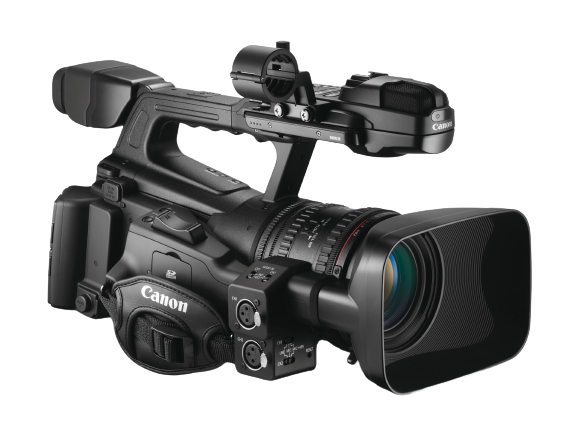
- 1080p recording with 4:2:2 color sampling: Excellent image quality for professional use.
- Compact and lightweight: Easy to carry for mobile productions.
- Dual CF card slots: Record for extended durations using hot-swappable cards.
Canon’s XF300 is a game-changer in the world of prosumer video camcorders. Boasting a revolutionary MPEG-2 4:2:2 50Mbps XF codec, it delivers pristine 1080p HD video directly to CompactFlash cards, all packaged in the widely supported MXF Document Wrapper.
With a compact and lightweight design weighing 6.5 lbs, the XF300 offers professional-grade build quality without sacrificing portability. Its intuitive controls and versatile form factor make it suitable for various production scenarios, from handheld shooting to shoulder-mounted setups.
Equipped with essential features like a 4-inch widescreen LCD with 1,230,000 dots and a .52-inch viewfinder, the XF300 ensures precise focusing and framing. However, the placement of the power switch may pose a slight inconvenience, requiring navigation through media mode to power off the camera directly.
Pros
- CompactFlash storage medium
- Codec widely supported
Cons
- 1/3 CMOS Sensor
- Delay in Zoom and Iris ring
10. Sony PXW-Z150 4K XDCAM Camcorder
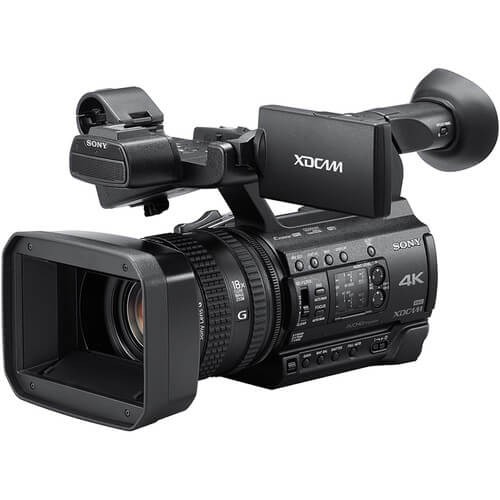
- 4K XDCAM recording: Capture high-resolution footage for professional productions.
- 1-inch Exmor RS CMOS sensor: Large sensor for excellent image quality and low-light performance.
- 12x optical zoom lens with Clear Image Zoom: Get close to the action without compromising image quality.
The Sony PXW-Z150 4K XDCAM Camcorder is a compact yet powerful tool for professional videographers. Equipped with a 1-inch Exmor RS CMOS sensor, this camcorder delivers exceptional image quality and performs well even in low-light conditions. With its 12x optical zoom lens and Clear Image Zoom feature, you can get closer to the action without sacrificing image quality.
This camcorder supports various recording formats, including 4K XAVC Long at 4:2:0 8-bit and HD XAVC Long at 4:2:2 10-bit at 50 Mb/s, providing versatility for different production needs. It also offers multiple picture profiles and supports Sony’s Slow and Quick Motion for shooting HD video at variable frame rates.
With dual SD memory card slots, you can record simultaneously to both cards or use relay mode for uninterrupted recording. The camcorder features built-in Wi-Fi and NFC connectivity for easy sharing and remote control. Additionally, it includes two 3-pin XLR audio inputs for external microphones and supports various audio recording options.
Overall, the Sony PXW-Z150 offers top-notch performance and flexibility in a compact and convenient package, making it suitable for a wide range of professional video productions.
Pros
- Wi-Fi/NFC networking capabilities for high mobility
- Compact and lightweight body
- Dual media slots for recording flexibility
- Built-in ND filter
- It is quite flexible – there are a lot of configuration options
Cons
- Doesn’t have dedicated buttons/switches for Gain, Shutter, and White Balance like other Sony cameras
- You can’t turn the Digital Extender on and off while recording.
- · The placement of the Menu and menu navigation buttons is horrible
Conclusion
In conclusion, the art of black and white photography holds a timeless appeal, offering a unique aesthetic that resonates with photographers and viewers alike. While many modern digital cameras have monochrome modes and post-processing options, dedicated monochrome cameras stand out for their ability to capture the essence of black-and-white photography with unparalleled clarity and depth.
From the Leica M Monochrome Digital Rangefinder Camera to the Nikon Z7 FX-Format Mirrorless Camera, each camera mentioned in our exploration of the best cameras for black and white photography brings its own set of features and capabilities to the table. Whether you prefer the classic feel of a rangefinder or the versatility of a mirrorless camera, there’s a black-and-white photography camera out there to suit your needs.
Ultimately, the best camera for black-and-white photography is one that inspires you to explore the world in shades of grey, capturing moments with passion and creativity. So, whether you’re a seasoned professional or an enthusiastic amateur, embrace the beauty of black-and-white photography and let your vision come to life through the lens of your chosen camera.


